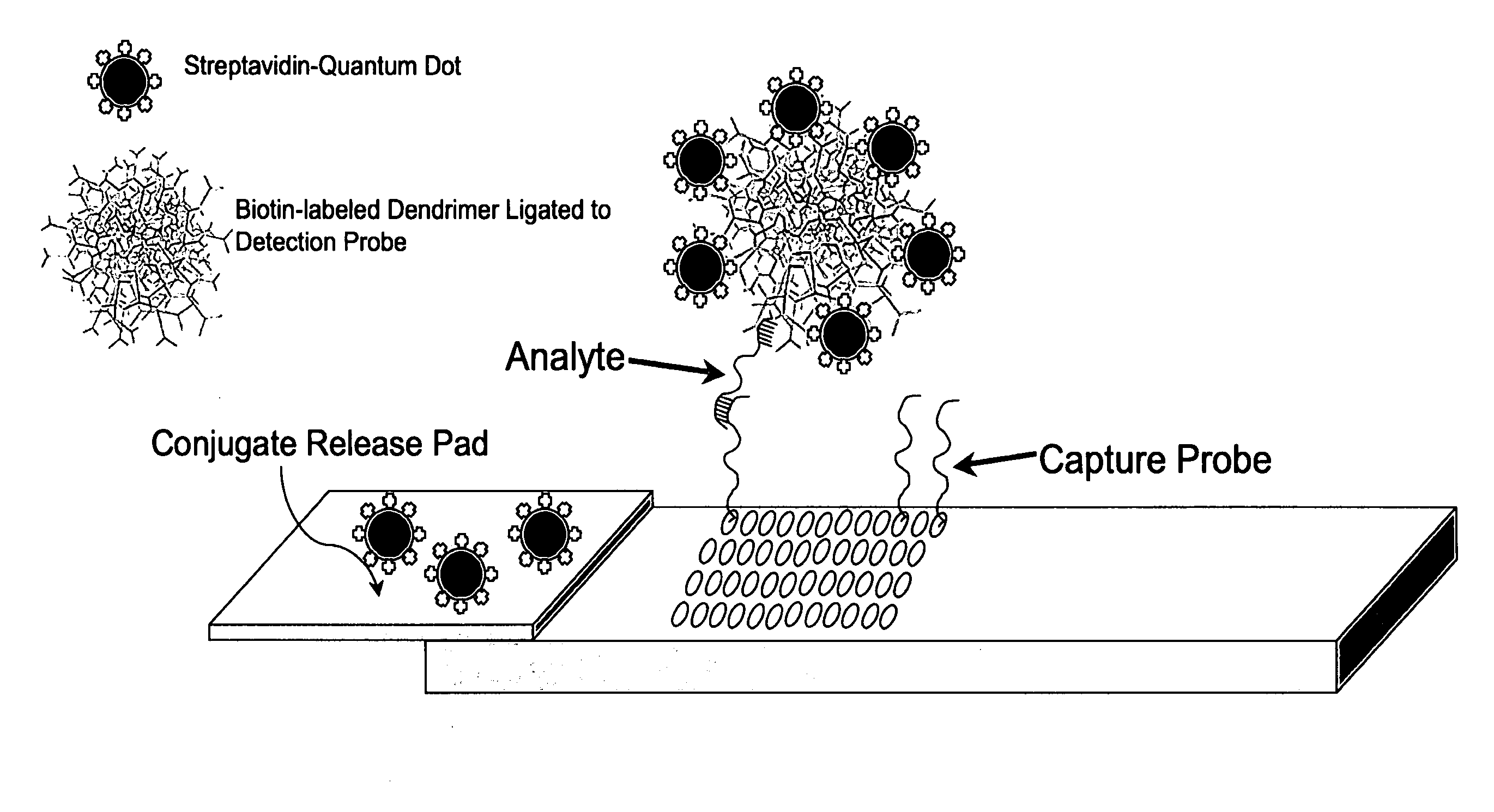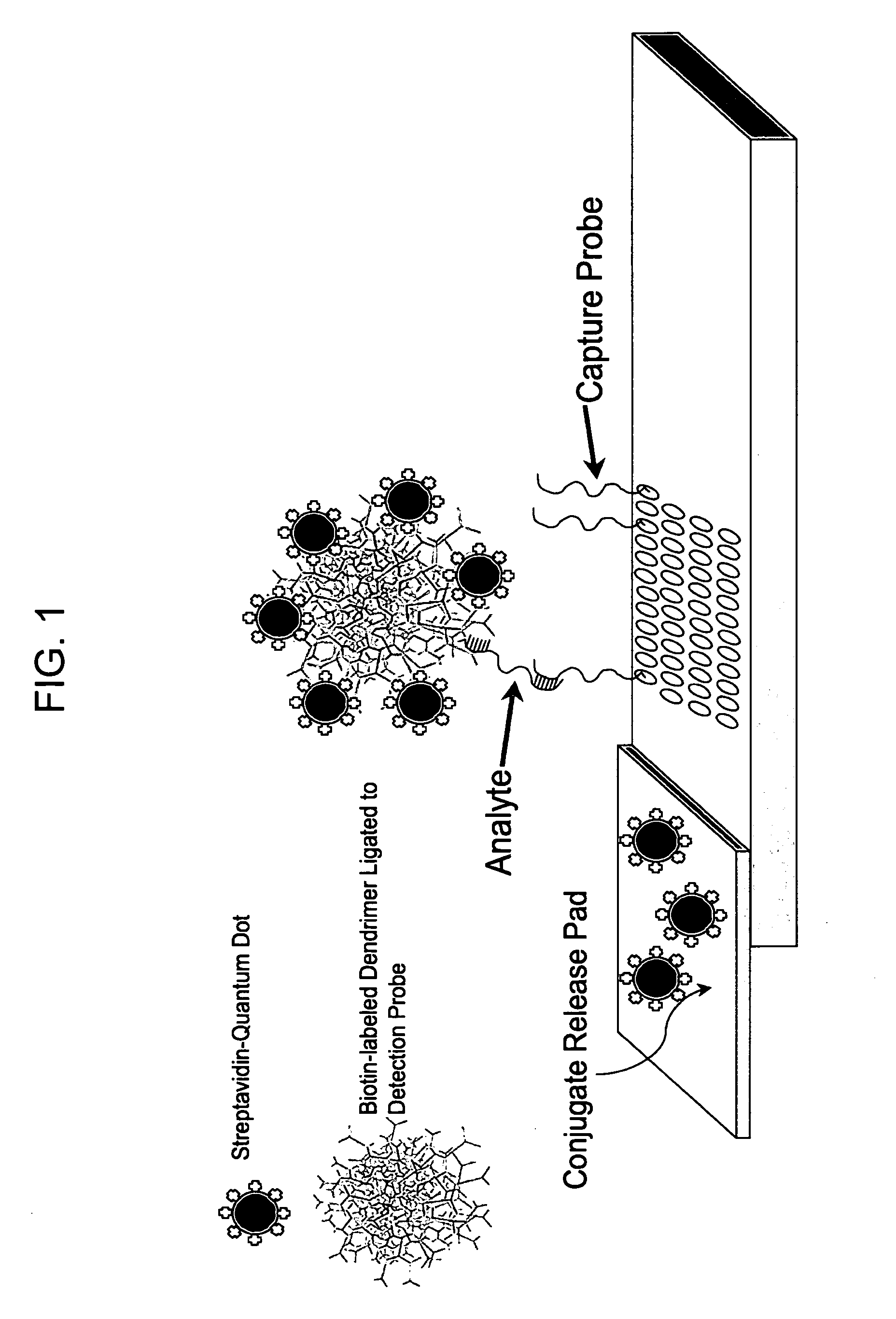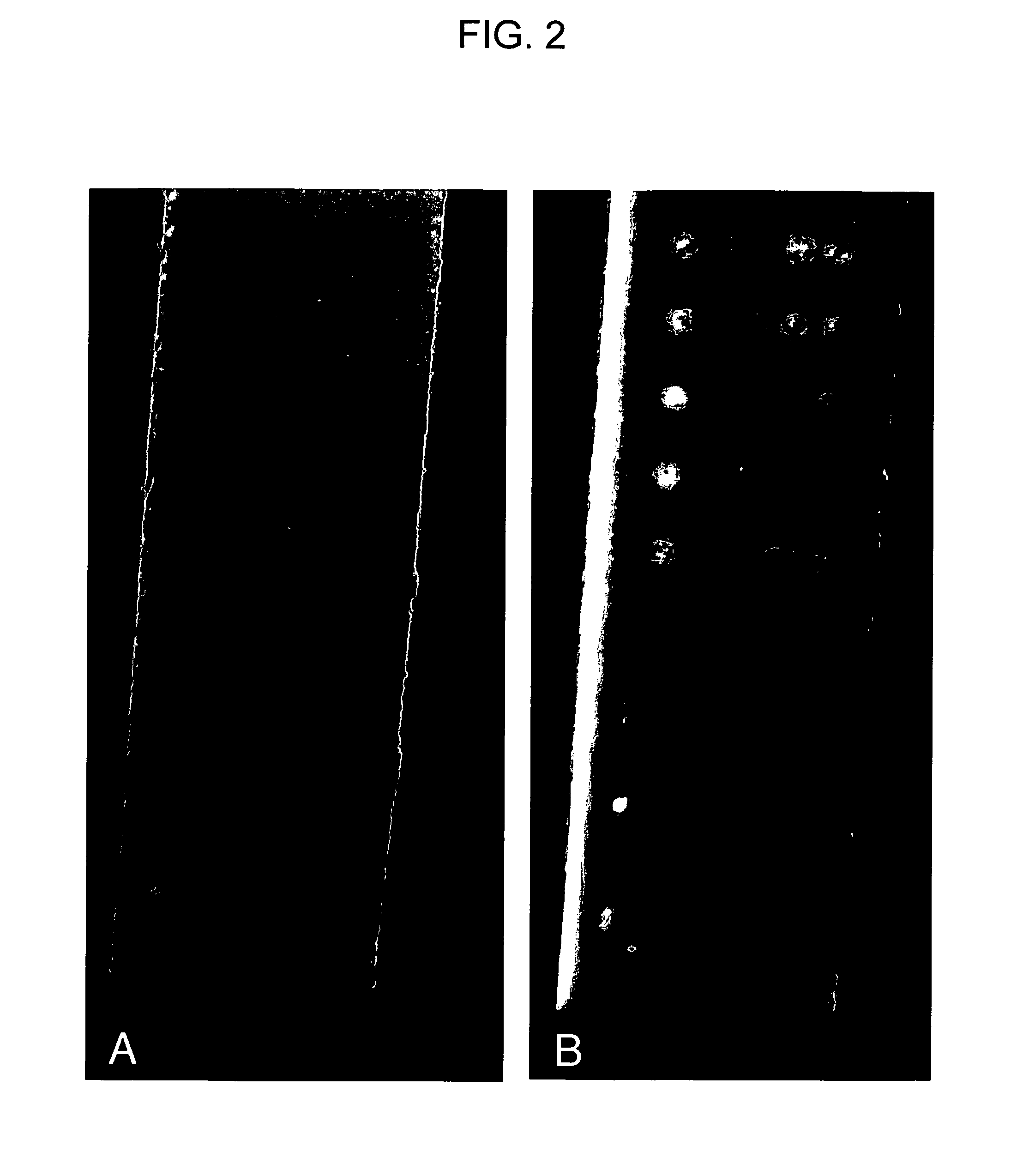Nanocrystal-Based Lateral Flow Microarrays and Low-Voltage Signal Detection Systems
a lateral flow microarray and signal detection technology, applied in the field of nanocrystal-based lateral flow microarrays and low-voltage signal detection systems, can solve the problems of reducing the utility of point-of-care diagnostics and deployment, limiting the utility of assays, and retaining assay sensitivity, so as to reduce or eliminate amplification requirements, improve signal amplification, and reduce the effect of sensitivity
- Summary
- Abstract
- Description
- Claims
- Application Information
AI Technical Summary
Benefits of technology
Problems solved by technology
Method used
Image
Examples
example 1
Fluorescent Semiconductor Nanocrystal-Based LFM
[0079]To assess the impact of a fluorescent reporter on the linear dynamic range of SN-LFM mediated analyte detection, a combined colorimetric and fluorescent detection scheme was devised. In this detection scheme, conjugated dyed microspheres as well as streptavidin conjugated fluorescent semiconductor nanocrystals (605 nm emission, Qdots, Invitrogen, Inc.) are used simultaneously as the reporter particles. For these experiments a detection oligonucleotide, R-57-76-3TBIO (5′-AGGTGAGACATAATCATGCATTTTTTTTTU-biotinTTTTU-biotinTTTTU-biotin3′), carrying three biotin-modified nucleotides was employed in hybridization sandwich assays. Following lateral flow of 250 amol of synthetic analyte dnaR89 in 10 μl of standard LFM running buffer, LFM strips were photographed under ambient light and under illumination with a hand-held UV-LED flashlight.
[0080]As illustrated in FIG. 2, this detection scheme clearly allows the simultaneous visualization of...
example 2
USB-Powered CMOS Imaging Device Prototype and Used in Detecting SN-LFM Signals
[0082]To retain the advantages of SN-LFM for use in the field or in the laboratory with inexpensive instrumentation, the capacity of widely available low cost CMOS imaging systems to provide a means of detecting SN-FM signals was evaluated. Making use of a “web-cam” (Philips, FunCam DMVC300K), UV-LEDs, a gelatin filter (Kodak, WRATTEN filter #15) and an empty Altoids box (Callard & Bowser, Curiously Strong Peppermints), a simple fixed focus imaging system was fabricated for under $20. This prototype SN-LFM imaging device was energized by a USB interface, and tested for its ability to detect SN-LFM signals generated by 605 nm emission semiconductor nanocrystals (Qdots, Invitrogen, Inc.).
[0083]As shown in FIG. 4, the prototype device was able to image SN-LFM signals, without the need for complex optics. Without optimizing light distribution or image collection routines, the prototype system was readily able ...
PUM
| Property | Measurement | Unit |
|---|---|---|
| Length | aaaaa | aaaaa |
| Pore size | aaaaa | aaaaa |
| Pore size | aaaaa | aaaaa |
Abstract
Description
Claims
Application Information
 Login to View More
Login to View More - R&D
- Intellectual Property
- Life Sciences
- Materials
- Tech Scout
- Unparalleled Data Quality
- Higher Quality Content
- 60% Fewer Hallucinations
Browse by: Latest US Patents, China's latest patents, Technical Efficacy Thesaurus, Application Domain, Technology Topic, Popular Technical Reports.
© 2025 PatSnap. All rights reserved.Legal|Privacy policy|Modern Slavery Act Transparency Statement|Sitemap|About US| Contact US: help@patsnap.com



